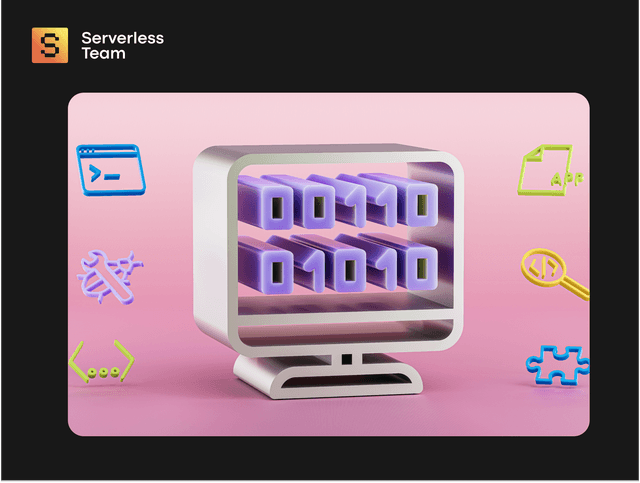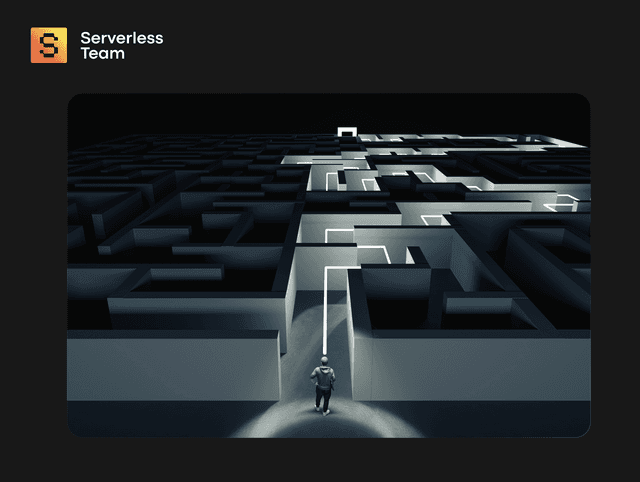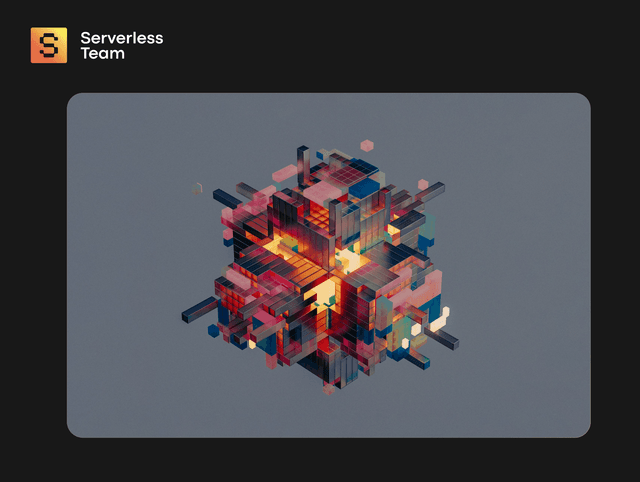As more and more businesses move to the cloud, it’s our duty as developers to provide them with the best architectural solutions. While there are cases where you might go with a monolithic architecture instead, choosing among the microservices design patterns is the preferred option for business apps.
Before we dive deeper, let’s recap what microservice architecture is. So, as the name implies, it’s an approach to building a server application using a set of small services. Every microservice focuses on a specific end-to-end domain or business capability within a defined context boundary. They're like little autonomous heroes that can be developed and deployed independently. For more details, read our Monolith vs. Microservices article.
To keep things neat, each microservice takes charge of its domain data model and logic, embracing sovereignty and decentralized data management. Plus, they're not picky about data storage and programming languages – they can easily work with SQL, NoSQL, and different coding tongues. It's all about flexibility and freedom.
Now that we got that out of the way, let’s get down to business and look at the most common microservices architecture patterns.

We take care of serverless development so you can focus on your business
Don't want to wait for our site launch? Let's talk about your idea right now.


Top 10 Microservices Design Patterns
So, what’s so important about the design patterns in microservices? They help generate reusable autonomous services — that’s a clutch.
Applying microservices architecture design patterns helps drastically speed up releases and allows to deploy services separately if needed. It also cuts down the costs of maintaining the infrastructure, improves its resilience, and supports the visibility of consumed resources.
But, of course, different microservices have their specific uses. So, let's take a closer look.
Database per Microservice
Divide and rule! That’s how to deal with data properly. This microservices database design pattern implies that each service has a dedicated database, ensuring independence and isolation, allowing them to manage data models autonomously.
Not only does it make it easier to scale and maintain specific functionalities without impacting others, but it also promotes flexibility and data sovereignty and avoids tight coupling between services. As a result, it’s much easier to understand what’s going on with the service and the data as a whole. Plus, if a new member joins your team, they won't have to untangle the mystery of your architecture as everything will be right on the surface.
The drawback to this pattern is that you must implement a solid failure-proof mechanism to ensure communication goes on strong.
Event Sourcing
Event Sourcing is all about storing and representing the state of a system as a sequence of events. Instead of simply updating the current state, events are recorded, offering a historical log of actions, which makes them reconstructable.
To keep track of all events, you have to incorporate an event store — a must-have for any event-based microservices architecture. It's like a database of events, which subscribes services to events via API and informs them about every event saved in the database.
This microservice design pattern simplifies complex domains by eliminating the need to synchronize data models and business domains. It offers improved performance, scalability, responsiveness, consistent transactional data, and a complete audit trail.
Event Sourcing is helpful when capturing intent, preventing conflicting updates, maintaining history, decoupling data input, and updating tasks. However, it won't work for small or simple domains, systems with minimal business logic that require consistency and real-time updates to the views of the data.
CQRS
CQRS, which stands for Command and Query Responsibility Segregation, is a smart microservices architecture pattern that boosts app performance, scalability, and security. It separates reading and updating data, making your system more flexible and avoiding clashes during updates.
Traditionally, reading and writing used the same model, but CQRS separates them. Commands handle data updates, while queries retrieve data. This keeps things simple and organized.
Benefits include easy scaling of read and write tasks, optimized data schemas, better security, and clear separation of concerns. By storing materialized views, queries become faster and more efficient.
Keep in mind that implementing CQRS can add complexity, especially with Event Sourcing. But if your app deals with parallel data access, complex UIs, or evolving requirements, CQRS is your go-to. Keep it simple for smaller projects, though!
Saga
The Saga pattern helps manage data consistency across microservices in distributed transactions. It uses a transaction sequence that updates each service and triggers the next step. If any step fails, compensating transactions undo the preceding changes.
In a multiservice architecture, ensuring data consistency can be challenging. The Saga pattern provides a solution using local transactions and two common approaches: choreography and orchestration.
Choreography involves participants exchanging events without centralized control, while orchestration relies on a centralized controller to coordinate the saga. Here is a great example of orchestrating microservices using the Saga pattern with AWS Step Function.
Implementing the Saga pattern may have some challenges, but it's useful when you need to maintain data consistency in a distributed system without tight coupling and want to handle potential failures gracefully.
BFF (Backend For Frontend)
The Backends for Frontends (BFF) pattern enhances end-user customer experience on User Interfaces (UI) by implementing one backend per user experience instead of a single general-purpose API backend. It combines the BFF pattern with the Publisher-Subscriber (pub/sub) pattern, allowing frontend clients to load UI-ready data projections and receive event-driven notifications, leading to a high-performant near-real-time experience.
The BFF pattern addresses challenges like providing different data for mobile and desktop interfaces, supporting real-time feedback via WebSockets, and avoiding bottlenecks in a shared API backend. By treating the user-facing application as two components - a client-side app and a server-side BFF - the pattern enables a tighter coupling between the UI and BFF, making it easier to define and adapt APIs as needed, streamlining releases for both client and server components.
Netflix is an example of a company that successfully adopted the BFF pattern, swapping its API backend for the Android app, allowing better scrutiny, observability, and integration with its microservice ecosystem.
BFF pattern enhances end-user experience by tailoring APIs to specific user interfaces. It improves real-time feedback through event-driven notifications and streamlines client and server component releases. Cool, right?
However, this design pattern for microservices architecture requires separate backends for different user experiences, potentially increasing development and maintenance efforts. Plus, the tight coupling between UI and BFF may make it challenging to introduce changes independently.
It’s good to apply for applications with multiple UI types that require distinct data and interactions with real-time updates for improved user engagement. Or in scenarios where aligning releases of client and server components is essential for seamless updates and feature additions.
API Gateway
The API Gateway pattern acts as a gateway, providing a single entry point for clients while internally routing their requests to different microservices. Think of it as a smart translator that abstracts away the technical details and adds extra functionality to make everyone's life easier.
This pattern is great when you have a manageable number of dependencies for a microservice, need quick synchronous responses, and want to keep things snappy with low latency. Plus, if you want to expose just one API that collects data from various microservices, the API Gateway is the way to go.
For example, the API Gateway could link different microservices handling customer payments, sales updates, and communication in an insurance system. It streamlines the process and makes it seamless for clients, but it comes with challenges. It might introduce extra waiting time due to synchronous calls and slightly higher costs.
Despite its challenges, the API Gateway pattern remains beneficial for structuring and managing complex microservices architectures and creating a unified and efficient interface for client applications.
Strangler
The Strangler Pattern is all about coexistence and a smooth transition. Inspired by a fig tree that gradually envelops its host, this pattern allows you to replace specific functionalities in your monolith with modern and sleek microservices.
The process involves three steps: Transform, Coexist, and Eliminate. First, you identify and create modern components alongside your legacy application. Then, you keep the monolith for rollback and use an HTTP proxy to redirect traffic to the new services. This way, you can add new functionalities while still supporting the old ones. Finally, as the new services strengthen, you retire the old functionalities from the monolith.
This microservices architecture design pattern is perfect for gracefully migrating from old to new services, allowing for versioning of APIs and smooth legacy interactions. However, it might not be suitable for small systems or situations where requests can't be intercepted and routed. Plus, you'll need a rollback plan in case things go awry.
Imagine it as a gradual garden makeover, where the monolith and microservices live side by side until the transition is complete. AWS Migration Hub Refactor Spaces provides a starting point for easily applying this pattern, orchestrating the necessary AWS tools for a seamless transformation.
So, if you have a monolithic application that needs a modern touch, the Strangler is your green-thumb solution for a successful and incremental migration to microservices.
Circuit Breaker
The Circuit Breaker pattern, introduced by Michael Nygard in his book, Release It!, is designed to prevent applications from repeatedly attempting operations that are likely to fail. Instead of waiting for the fault to be fixed or wasting CPU cycles, the Circuit Breaker allows the application to continue its flow. It also helps the application detect whether the fault has been resolved, allowing it to retry the operation if necessary.
Operating as a proxy for potentially failing operations, the Circuit Breaker monitors recent failures and decides whether to proceed with the operation or return an exception immediately. It functions in three states:
- Closed: In this state, the proxy routes requests to the operation and keeps track of recent failures. If the number of failures exceeds a specified threshold within a certain time period, the proxy switches to the Open state. After a timeout, it moves to the Half-Open state.
- Open: In this state, requests fail immediately, and an exception is returned to the application.
- Half-Open: A limited number of requests are allowed to invoke the operation. If successful, the circuit breaker assumes the fault has been fixed and switches back to the Closed state. If any request fails, it returns to the Open state.
The Circuit Breaker provides stability during failure recovery and helps maintain response times by swiftly rejecting likely-to-fail requests rather than waiting for timeouts. It can be customized to suit different types of failures, such as adjusting timeout intervals or returning meaningful default values.
Considerations for implementing this pattern include proper exception handling, analyzing different types of exceptions, logging failed requests, and configuring the circuit breaker appropriately. Concurrency and resource differentiation should also be considered to avoid blocking concurrent requests or accessing unavailable resources.
In summary, this pattern is useful for preventing applications from invoking likely-to-fail operations, ensuring stability during failure recovery, and optimizing response times. However, it's best to avoid using it for local private resources within an application and handle exceptions in its business logic instead.
Externalized Configuration
The Externalized Configuration pattern offers a practical way to manage your app's settings efficiently. By storing configuration information externally and providing a straightforward interface, you can quickly read and update those settings as needed.
Choosing the right external storage depends on your app's hosting and runtime environment. You have various options like cloud-based storage services, dedicated configuration platforms, hosted databases, or even custom systems if you prefer.
The key is to ensure your chosen storage solution provides consistent and easy access to your configuration data. It should be structured appropriately, and you may need to implement authorization to protect sensitive information.
This pattern is particularly useful for sharing settings across multiple apps or enforcing standard configurations. It simplifies the administration and monitoring of settings, offering a centralized approach to managing configurations effectively. So, when dealing with app configurations, consider the Externalized Configuration pattern as a reliable tool to streamline your process.
Bulkhead
The Bulkhead pattern provides a structured way to organize service instances or consumers into separate groups based on their load and availability requirements. This division helps isolate potential failures, ensuring that the functionality of one group can be sustained even if another encounters issues. Think of it as creating separate lanes on a highway. If one lane has a problem, it won't block the others, allowing smooth traffic flow for everyone else.
For instance, consumers can partition resources to prevent the impact of one service failure on other services. By assigning connection pools for each service, a failing service will only affect its dedicated pool, allowing consumers to continue using other services without disruption.
The advantages of the Bulkhead pattern include:
- Isolating consumers and services from cascading failures, containing issues within their respective bulkheads, and preventing system-wide failures.
- Preserving some functionality in case of service failure, as other services and features can continue functioning smoothly.
- Allowing services to offer different levels of quality of service for consuming applications and configuring high-priority consumer pools to use high-priority services.
Use the Bulkhead pattern when you want to keep the party going, even if some services are acting up. It's perfect for isolating resources, protecting against cascading failures, and serving different consumers with varying priorities.
However, remember that it may not be suitable if resource efficiency is critical or if added complexity isn't necessary for your project.

Kyrylo Kozak
CEO, Co-founderGet your project estimation!

Best Practices for Implementing Microservices Design Patterns
For a top-notch implementation of microservices design patterns, you need to plan well and stick to best practices. Here are a few tips from our experts that will help you do well:
- Compare microservices with other architectures: Before settling with microservices, take a look at your project's needs and compare different architectural styles. Consider the trade-offs, pros, and cons of microservices, monolithic architecture, and other patterns.
- Avoid under-fragmentation: While microservices promote modularity, you won’t want to end up with service overload. Aim for a balance where each service has a clear responsibility and is independently deployable.
- Embrace Domain-Driven Design (DDD): Analyze your domain model and identify bounded contexts and ubiquitous language to define your services' boundaries effectively. DDD helps ensure that your microservices are well-designed, maintainable, and aligned with your business needs.
- Ensure strong service isolation: Decouple microservices from one another to achieve independent development and deployment. Ensure strong service isolation with well-defined APIs. Use REST or gRPC to communicate and avoid the pitfalls of shared databases.
- Set up a CI/CD pipeline: A CI/CD pipeline will help automate your development and deployment processes. With seamless integration and continuous deployment, you'll be able to quickly identify and resolve issues, ensuring a faster time to market.
- Prioritize scalability and resilience: Design your microservices to scale horizontally to handle increased demand. Prioritize scalability and resilience to handle any surge in demand. Let auto-scaling and load balancing come to your rescue. Additionally, use fault tolerance mechanisms like circuit breakers, retries, and timeouts to improve overall system resilience.
- Monitor and analyze performance: Keeping one eye open is essential for identifying performance bottlenecks and potential issues. With robust monitoring, logging solutions, and distributed tracing, nothing escapes your watchful eye.
- Pay attention to security: Implement strong security measures like authentication, authorization, and encryption to safeguard your data from potential threats. Plus, set aside time to update and patch your microservices to reduce security risks.
- Test, and then test some more: Implement comprehensive testing to ensure your microservices are in top-notch shape. With unit tests, integration tests, and automation, you'll be invincible against bugs.
Follow these best practices to pave the way for a successful implementation of microservices architecture and design patterns. Remember that microservices require careful planning and fine-tuning, but once that's covered, they deliver incredible perks.
Conclusion
In conclusion, microservices design patterns take center stage when architecting top-notch solutions for businesses in the cloud. They offer a flexible and efficient approach to building server applications, where small autonomous services work together like a team.
We've explored a wide array of design patterns from Database per Microservice, granting autonomy and isolation for better scalability, to the dynamic dance of Event Sourcing, recording every action like a historical log for easy reconstructing.
We've delved into the CQRS pattern, separating reading and updating data to boost performance, and the Saga pattern, ensuring data consistency in distributed transactions. The BFF pattern captivated us with its user-experience enhancement, while the API Gateway acted as a smart translator, making life easier for clients.
The Strangler pattern showed us a graceful transition from old to new services, and the Circuit Breaker provided stability during failure recovery. We also explored the Externalized Configuration, streamlining app settings management, and the Bulkhead, ensuring smooth functionality despite failures.
By following our tips to implement microservices design patterns carefully, you'll be well-equipped to handle the demands of modern cloud-based applications.





